The film starts with a cheesey fifties-era discussion of the Kappa. Many early Godzilla films start this way as a way of preparing the audience to watch something from another culture. In the background, however, we hear the cries of obscure Kaiju. Titanosaurus from Ishiro Honda's Terror of Mechagodzilla is clearly heard, and I'm pretty sure Gigan is in there, too. So we know that this is a film aware of its kaiju roots, and this is borne out by the film itself.
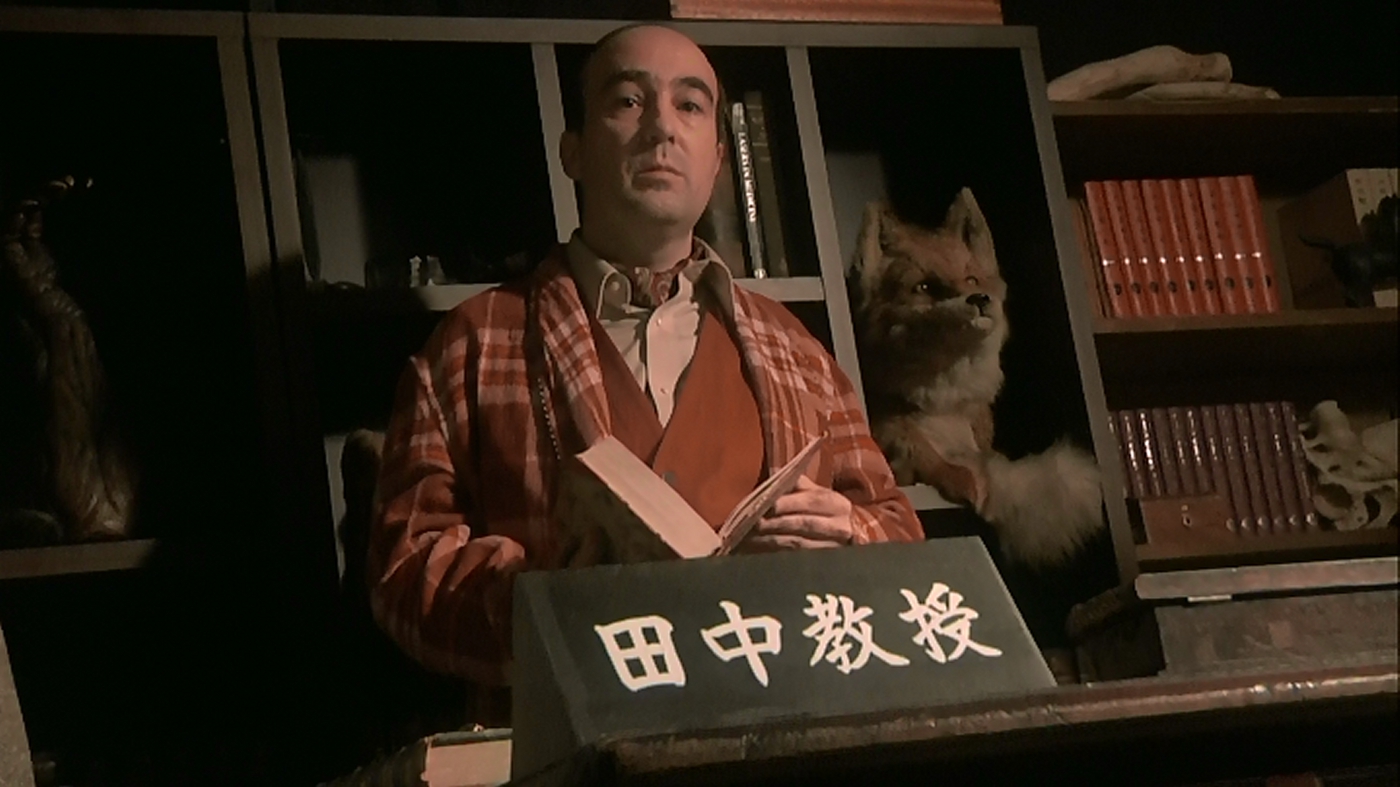
The plot is fairly basic. Kanako returns from Tokyo because she could not make it as a singer. Her home village, of course, holds Lovecraftian deformed people, reckless kids, mystical countryside secrets, such as a kappa. Oh, and a secret ultra-nationalst Japanese base.
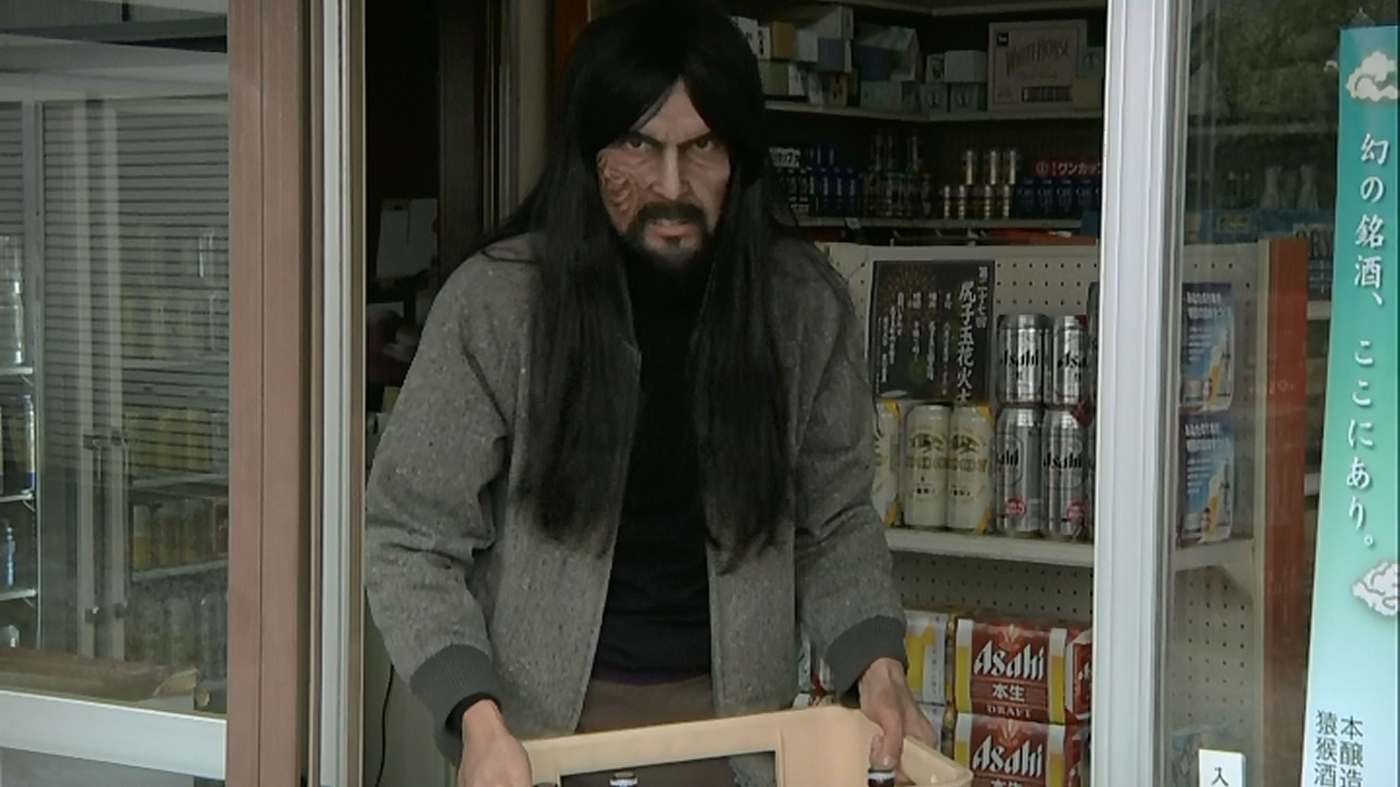
Grandma, who tends the Kappa shrine, is hit and killed by the reckless teenagers, so it's left to our lonely city girl to tend the shrine. The kappa starts off as just another spirit of justice. Human-sized, it takes care of the four in the car who killed Gran'ma, and dutifully eats the offered cucumbers. But our heroine Kanako's pop songs enchant it.
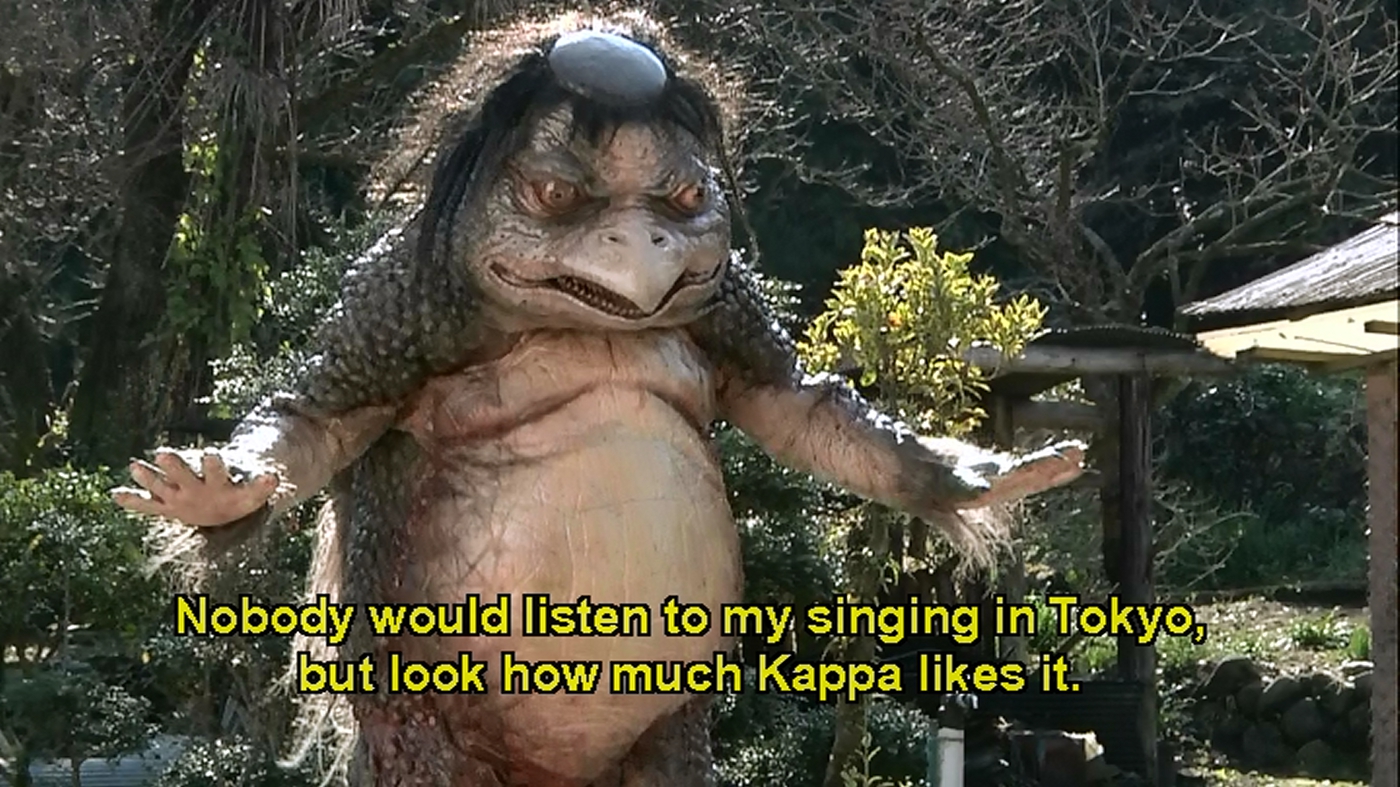
Kaneko is captured by the Ultra-nationalists, (again, shades of Ishiro Honda's Atragon) who dress a lot like Nazis. They are breeding a superior soldier from captured women and kappa. The project is being run by Yuriko, his sexy leather-and-boot clad granddaughter, who runs Grandpa's corpse around in a wheelchair everywhere she goes. Yeah, she's crazy. And she wears a teddy and garters under her lab coat.
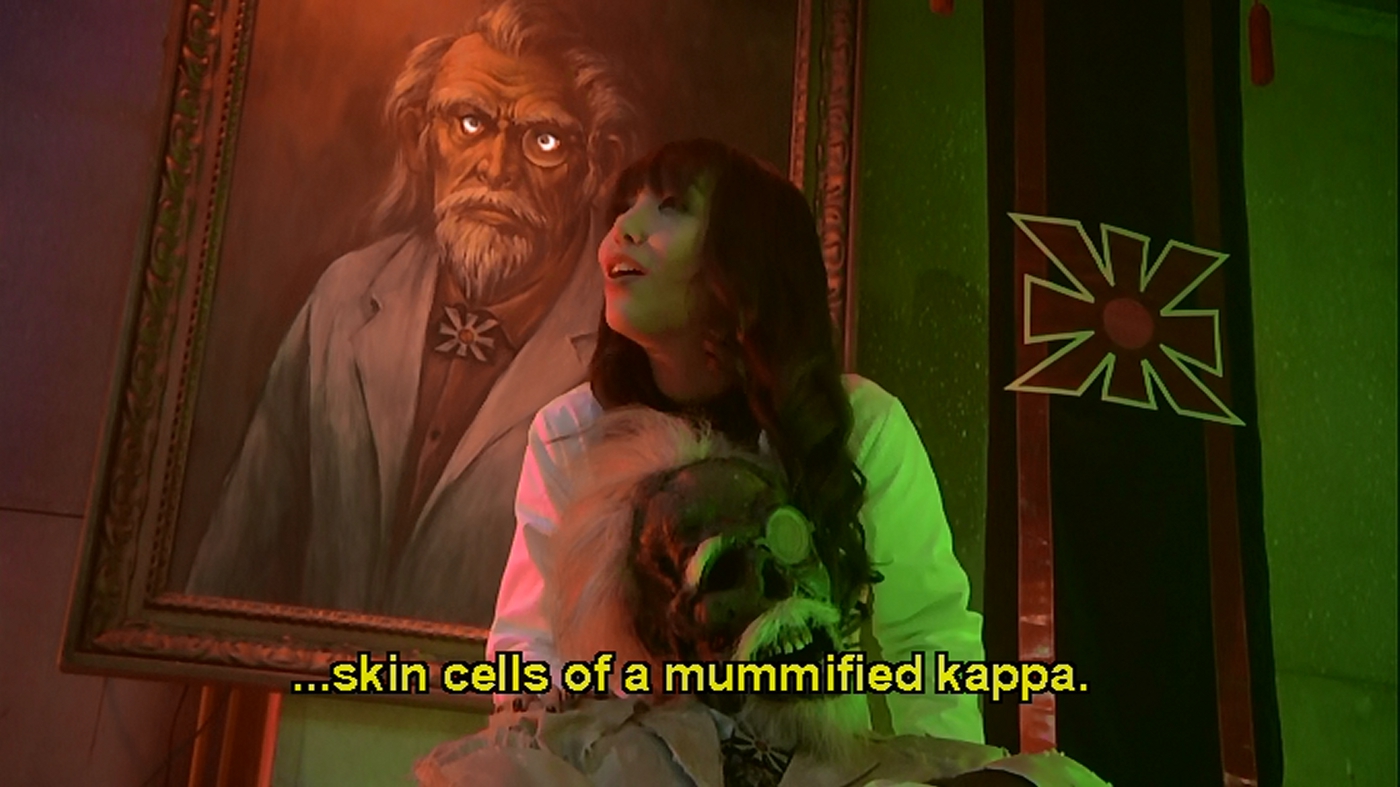
A lot of the scenes go on too long. How much do we need to see Yuriko pushing her grandfather around while Kanako tells her she's crazy? How long do we really need to see Yuriko spraying the underground base with machine-gun fire?
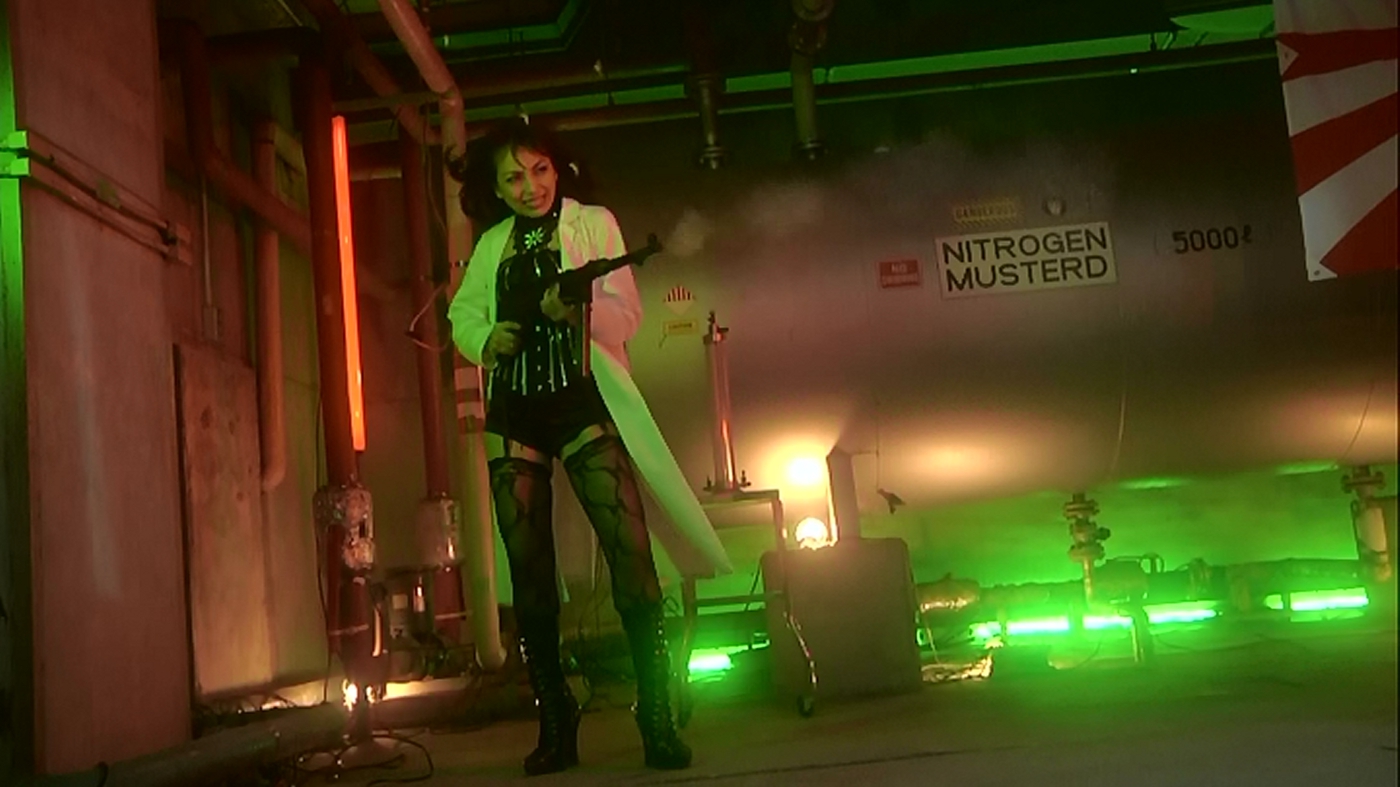
Anyway, Yuriko sets off a nuclear bomb which wipes the secret base out (thankfully) but also mutates something into a giant, city-wrecking monster. Hangyolas is blue, scaly, and reptilian. It also has a colorful red and yellow crest running down its back, clearly derived from Godzilla. The snout is shorter than Godzilla's, and it also has red spines or whiskers.
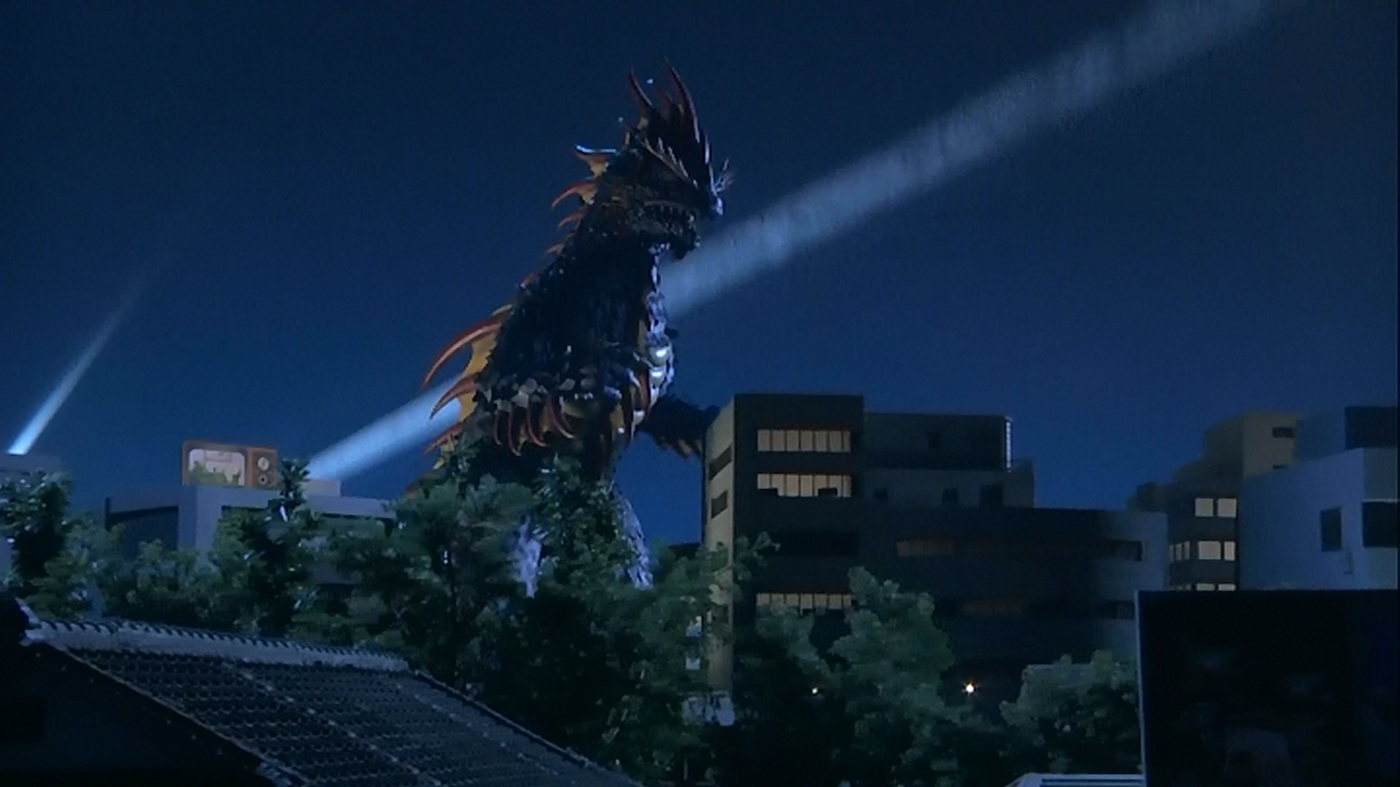
There are, of course, modern twists. A pair of guys on the street take a selfie with the monster behind them. We get the giant footprint, but this time, like 1933 King Kong, it (bloodlessly) squashes people. The Japanese cabinet, for reasons unknown, decides to name the monster Hangyolas. Still, at least we know what to call it.
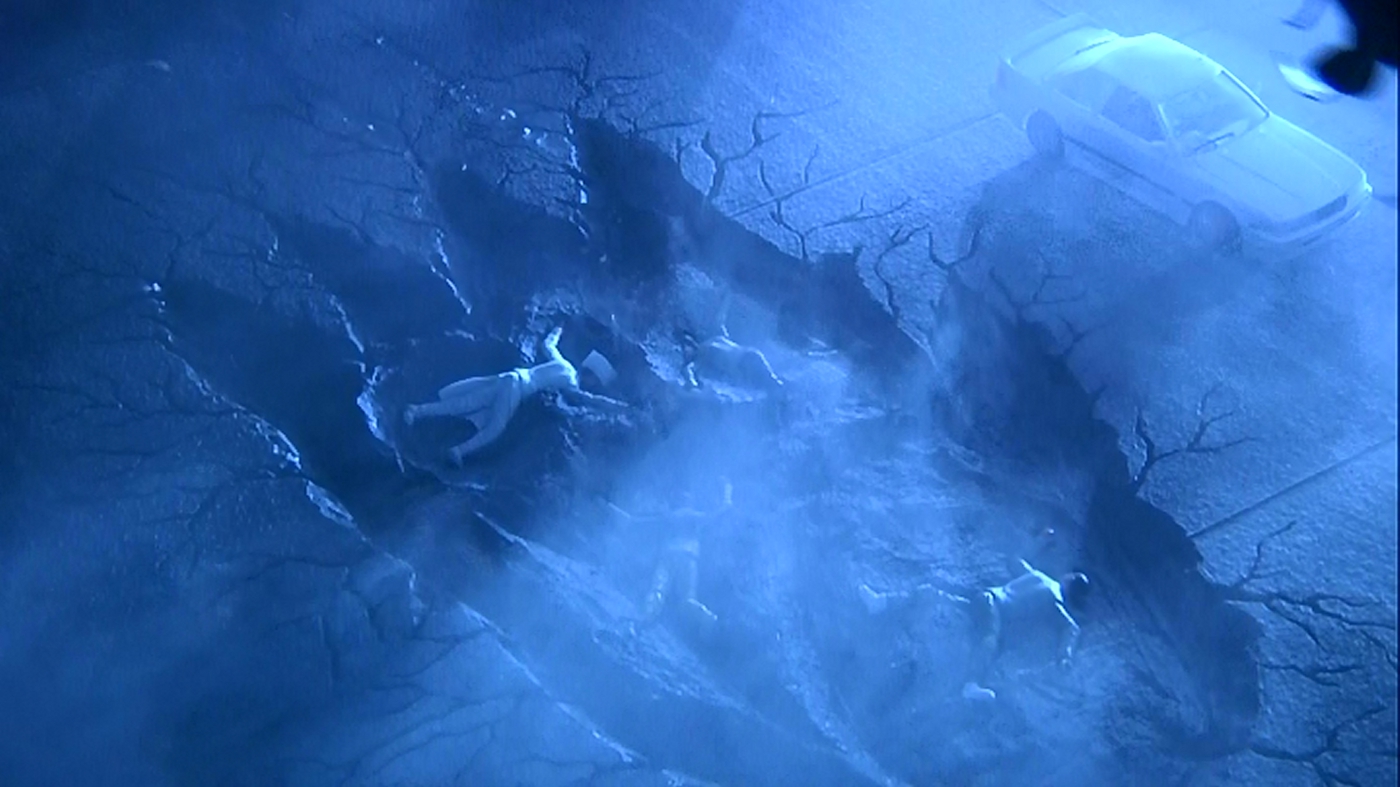
The Ultra-nationalists may have had a point. Although the military is deployed, they all lack the courage to actually open fire at the gigantic monstrosity. Ishiro Honda usually portrayed the military as there for show, rather than effectiveness, and Death Kappa takes that a step further, making them incapable of effective action. The aircraft deployed are F 104 Starfighers, last seen in Gamera vs Gyaos and Yonggary. Which is strange, because the tanks are modern, so it's just possible this is a subtle joke. Overall, the miniatures work is pretty good. The film makers are even confident enough to poke some fun at their own mniature work by showing us several shots where the wire holding up aircraft can be clearly seen. And of course Hangyolas has a fiery breath weapon. Because kaiju have breath weapons.
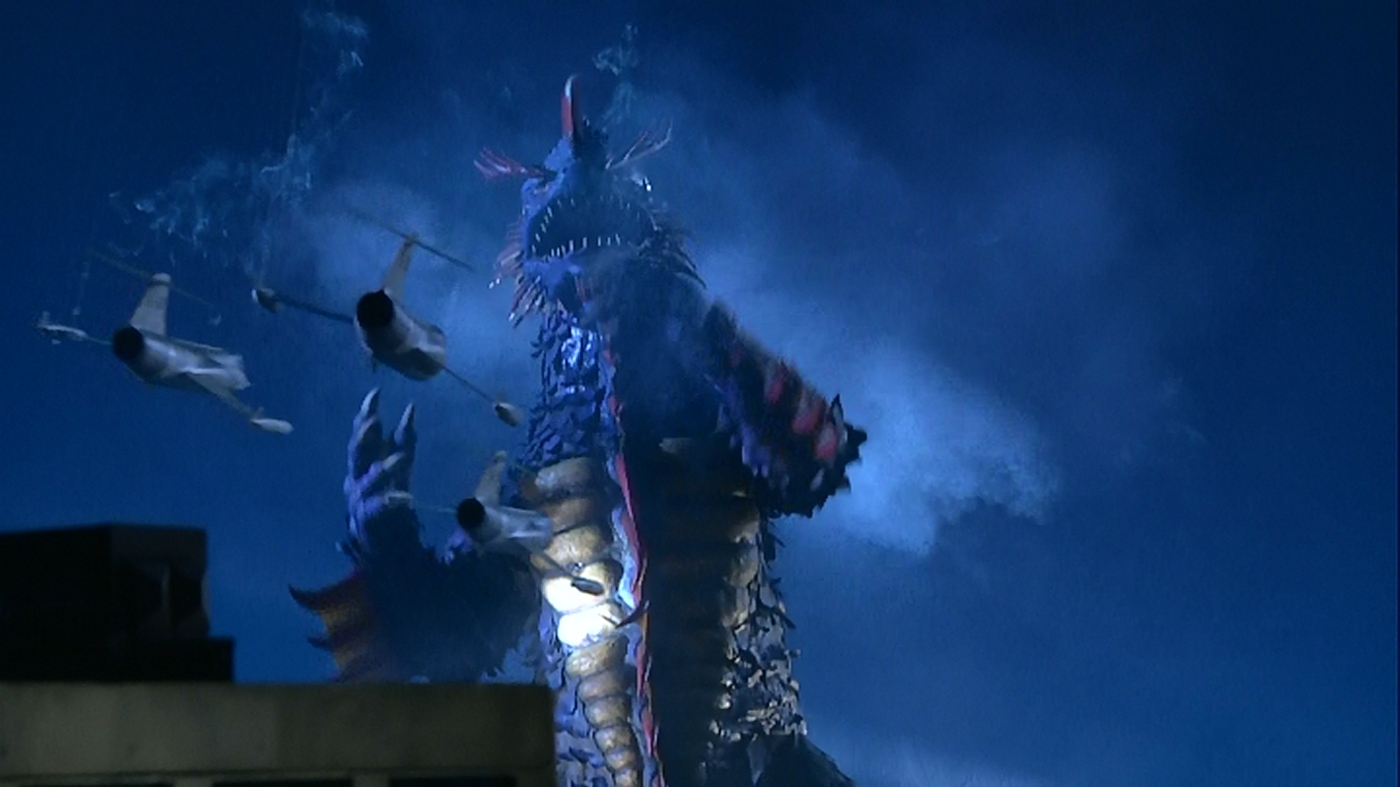
Although the miniatures scenes go on too long, clearly stretching the run time, this sequence I didn't mind. Hangyolas is an interesting-looking monster, the miniatures are well done. This is what I came to see. Although we don't see Hangyokas smash any buildings, possibly due to budgetary reasons. But the military has a secret weapon: an imitation of Eiji Tsuburaya's maser gun, the Gorgon Death Ray. It has a long neck and a projector that remains parallel to the ground. It's effective until Hangyolas fires its devastating breath weapon, and it all goes up in smoke and flame.
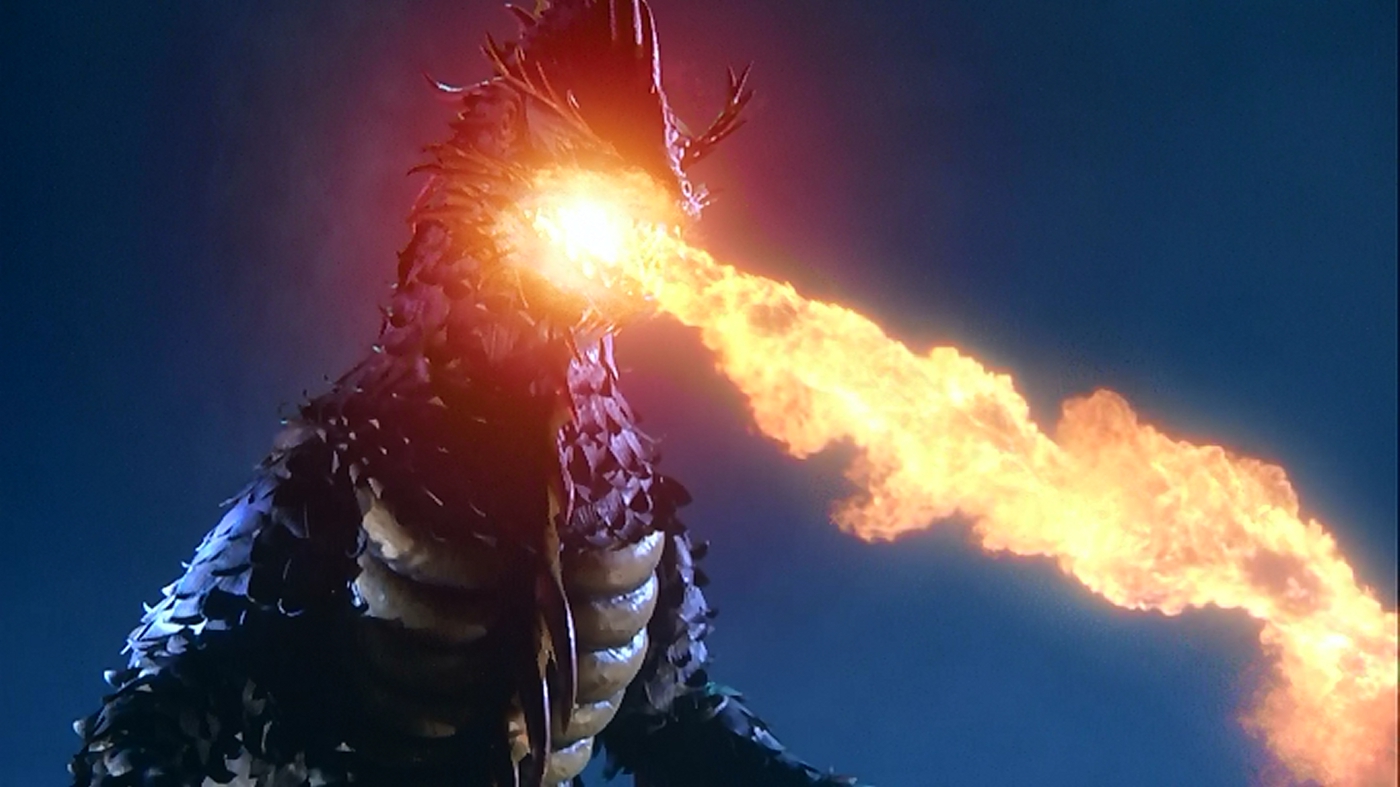
Luckily for humanity, The kappa has also been enlarged, presubaly by the radiation, and also has his own Godzilla-style breath weapon. It stops Hangyolas in an off-screen appearance very reimiscent of a scene in Godzilla vs Hedorah. And the monster wrestling begins. Death Kappa pulls off Hangyolas' tail, but the fight continues. I wonder if that's where Del Toro got the idea to cut off Otachi's tail and keep the fight going in Pacific Rim.
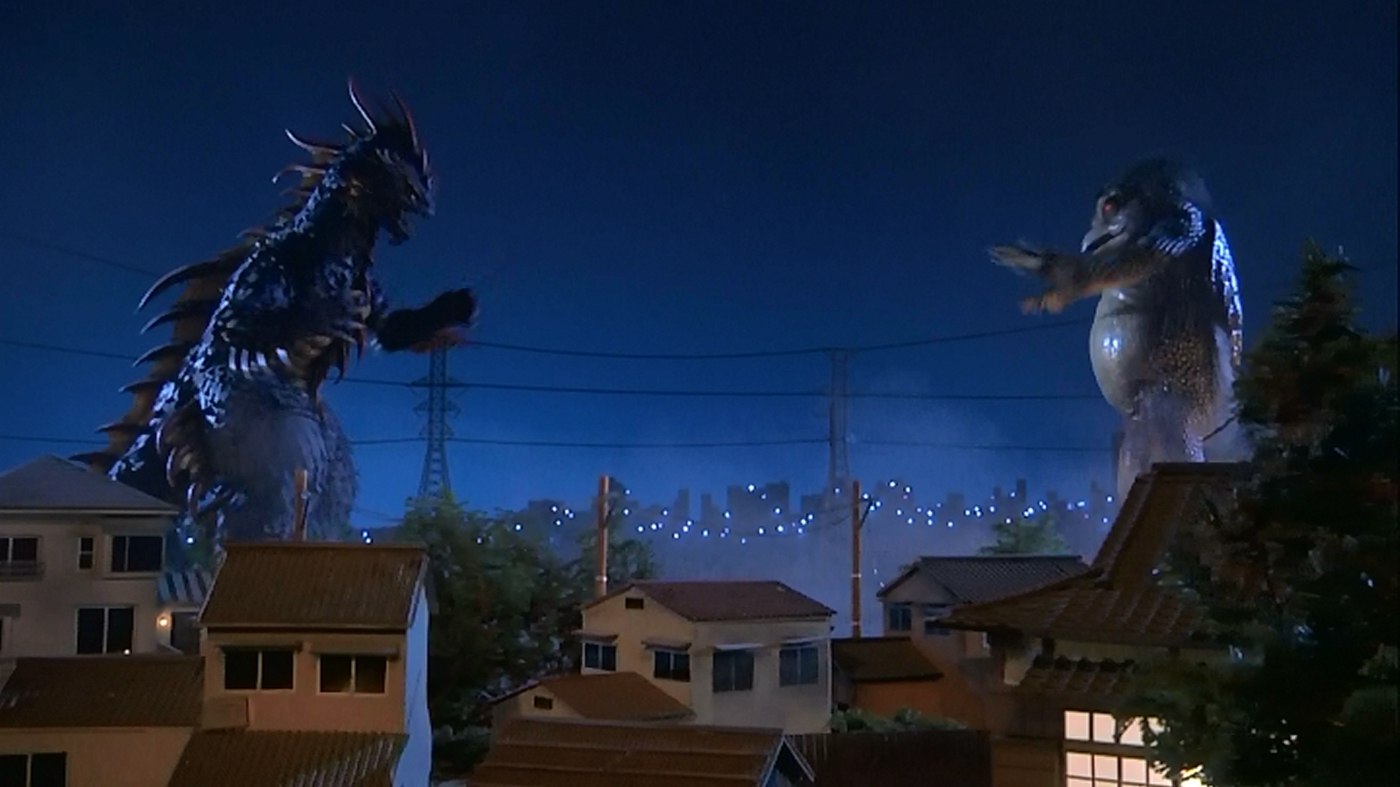
Once Hangyolas is defeated, Death Kappa begins its own rampage. It can only be stopped by Kaneko , who has apparently survived the nuclear detonation of th Ultra-nationalist base. She sings to it, and it calms down. Death Kappa then retreats to the ocean.
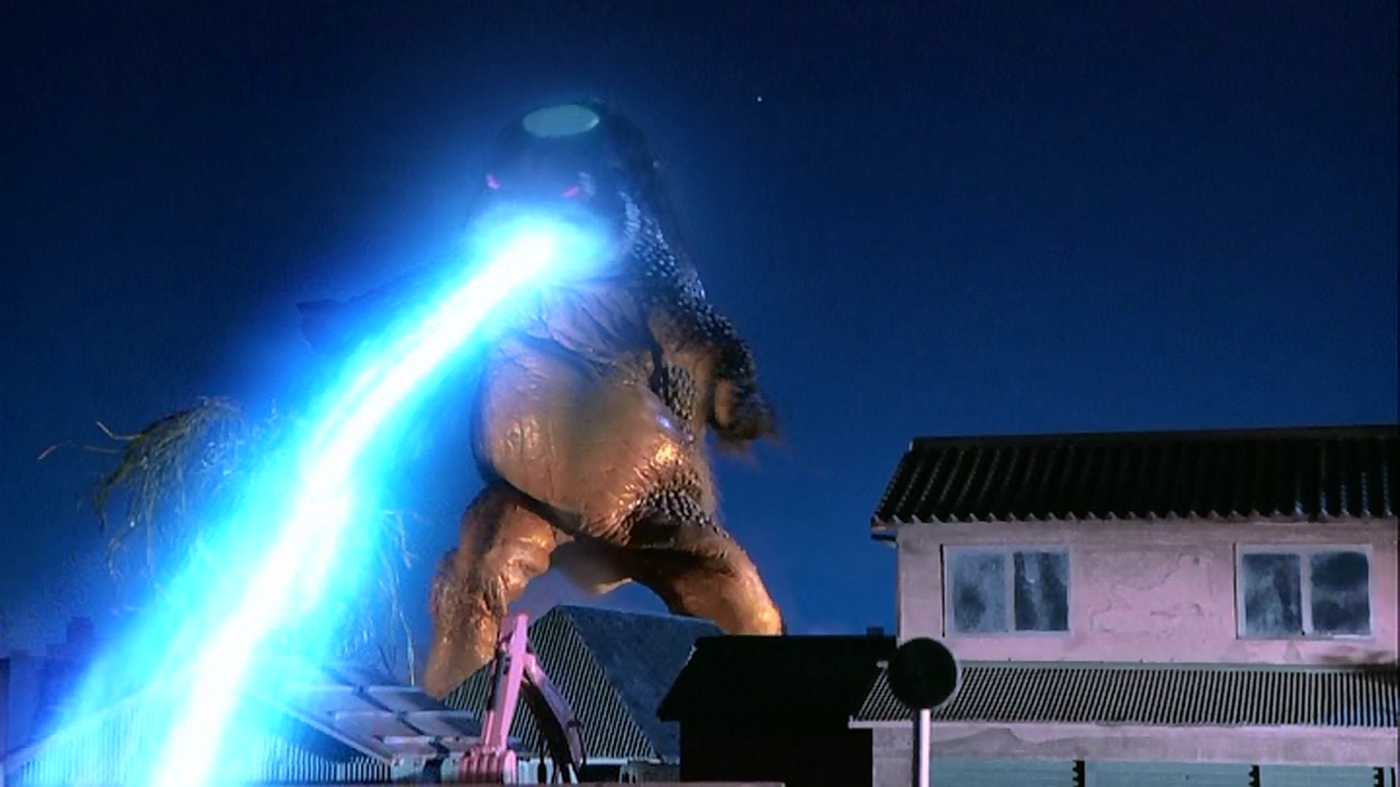
Death Kappa is best described as adolescent. The women in it are needlessly sexualized; the bad girls all show up in bikinis, Yuriko wears what looks like an uncomfortable teddy and stockings under her lab coat. The jokes are broad, the plot pretty flimsy. It feels similar to Monster X Strikes Back, an affectionate ribbing of the Kaiju genre. But the monster action, although heavily derived from wrestling, is pretty good, and the last major film to use suitmation. Hangyolas is a much more interesting monster than the Death Kappa, but it also has a lot more screen time. Death Kappa is also the last kaiju film made until Pacific Rim was released.
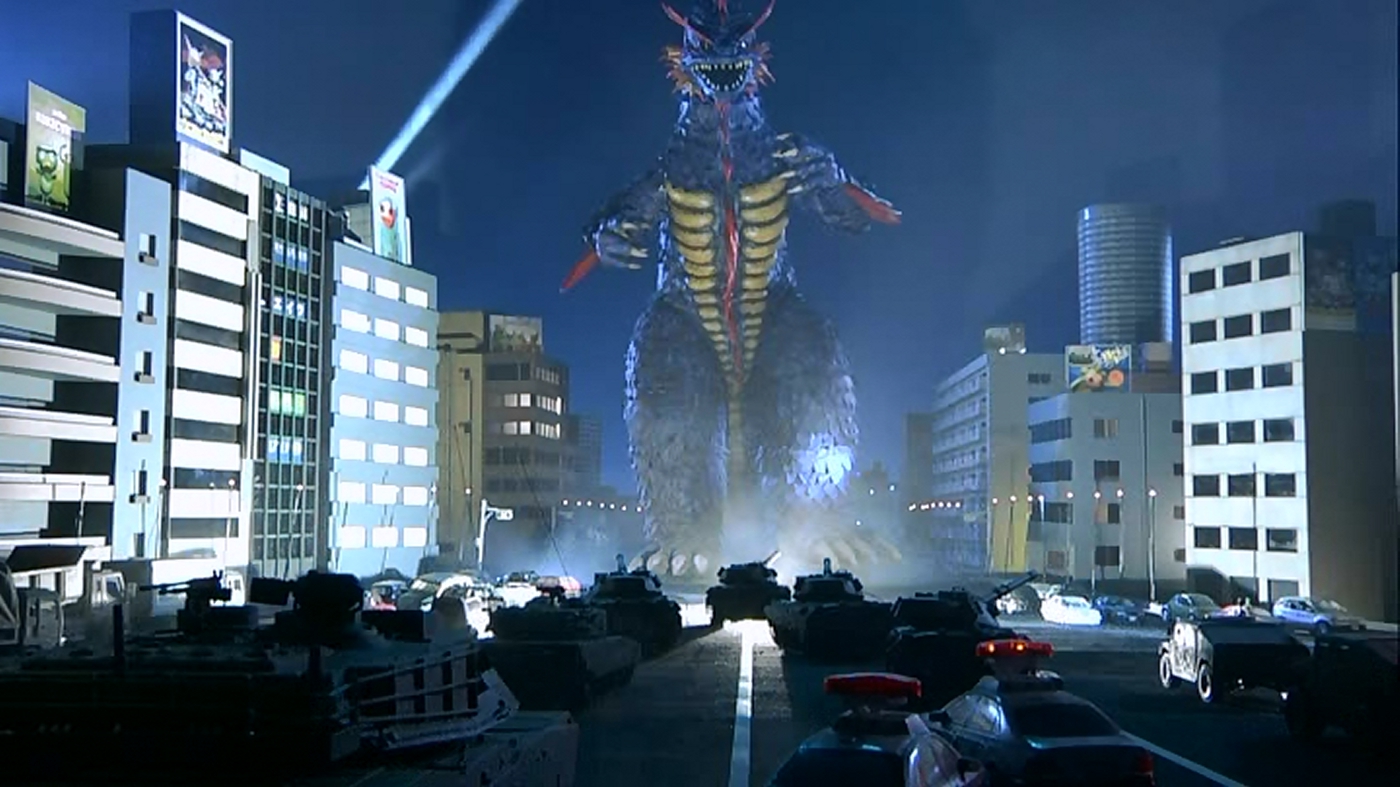
Next week, the last of my weekly kaiju reviews. And it's a stinker.
No comments:
Post a Comment